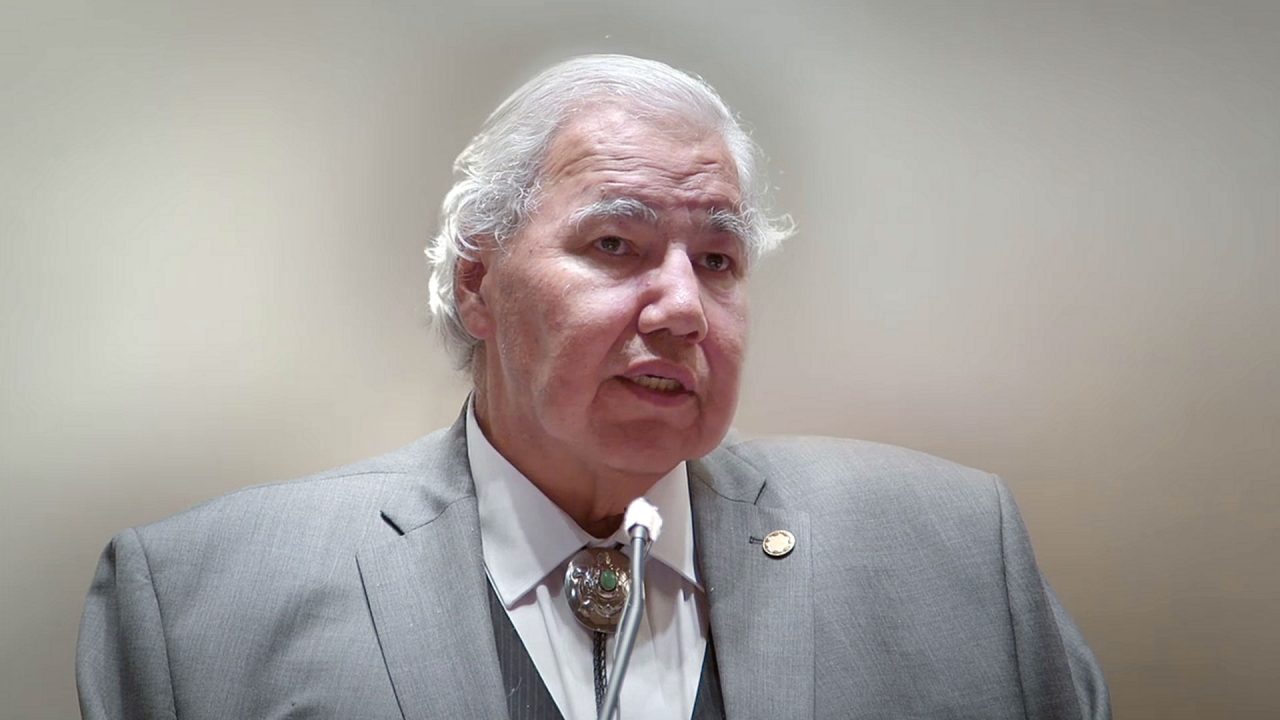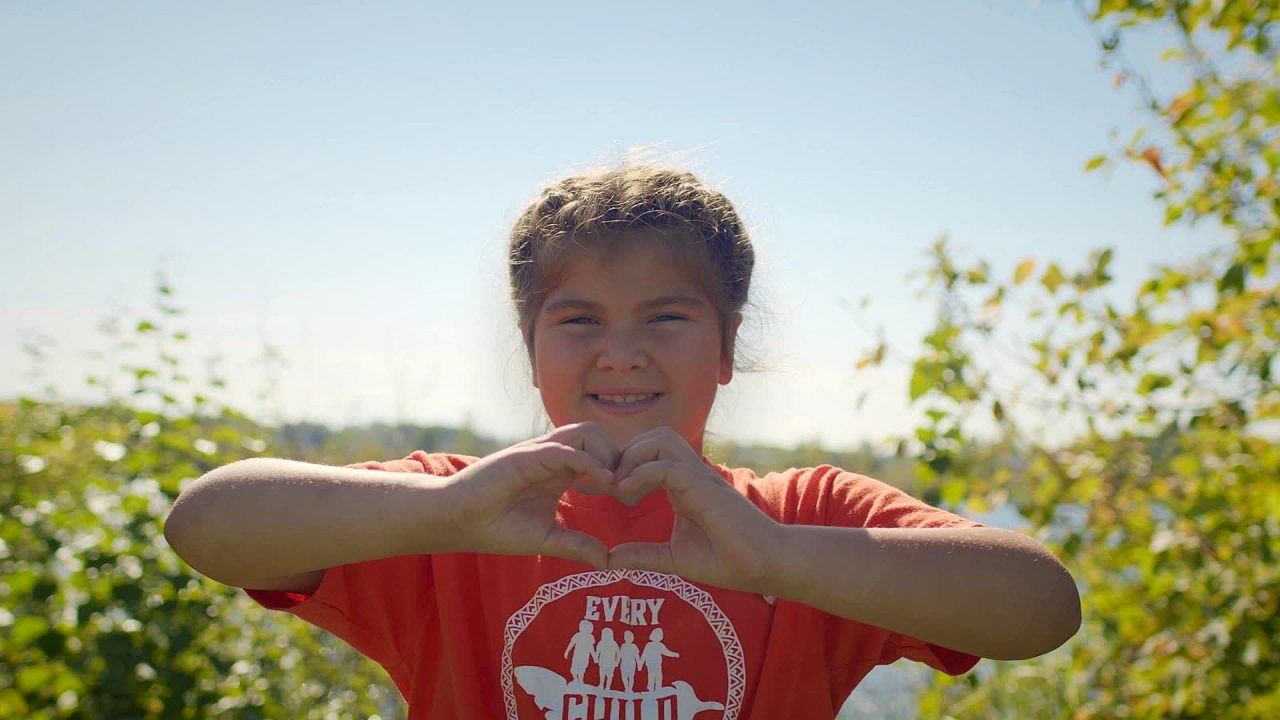
Mini-Lesson for Honour to Senator Murray Sinclair
Mini-Lesson for Honour to Senator Murray Sinclair
Mini-Lesson for Honour to Senator Murray Sinclair
Recommended Ages: 15-17
Honour to Senator Murray Sinclair, Alanis Obomsawin, provided by the National Film Board of Canada
Warnings: Viewer discretion is advised, as there is discussion of physical, sexual and psychological abuse may be triggering for some students and staff (activity no. 3).
Please refer to NFB Education’s Safe Spaces for Dialogue and Discussion guide on sensitive content.
Synopsis: As the Chair of the Truth and Reconciliation Commission, Senator Murray Sinclair was a key figure in raising global awareness of the atrocities of Canada’s residential school system. With determination, wisdom and kindness, Senator Sinclair remains steadfast in his belief that the path to actual reconciliation between Indigenous and non-Indigenous people requires understanding and accepting often difficult truths about Canada’s past and present. Alanis Obomsawin shares the powerful speech the Senator gave when he accepted the WFM-Canada World Peace Award, interspersing the heartbreaking testimonies of former students imprisoned at residential schools. The honouring of Senator Sinclair reminds us to honour the lives and legacies of the tens of thousands of Indigenous children taken from their homes and cultures, and leaves us with a profound feeling of hope for a better future.
Educational Synopsis: For most of Canada’s existence, the teaching of its history has omitted the many racist laws, horrors, abuses and genocide perpetrated on the Indigenous Peoples of this land. This mini-lesson follows Murray Sinclair as he demonstrates that the colonial narrative that shaped Canada’s version of history tokenized, dehumanized and erased the many contributions and innovations of Indigenous Peoples and their key role in shaping what is now known as Canada.
Keywords: Indigenous Studies, History of Colonialism, Indian Residential Schools, Truth and Reconciliation Commission, Indian Act, Treaties, Royal Proclamation of 1763
Overarching Question: According to this film, what was omitted from Canada’s historical narrative and how would teaching the complete version of Canada’s history contribute to true understanding and reconciliation?
Activity 1: Canada’s Historical Narrative
This clip begins with Murray Sinclair speaking about the impact of Indian residential schools.
Watch clip: 19:14–22:28
Activity: Talk and Turn
Choose a partner that you have not spoken to today and do a “turn and talk” session with this question in mind.
- Based on the clip, what is the version of Canada’s history that was presented in history classes and how has what they were taught impacted the relationships between Indigenous and non-Indigenous Peoples?
Post-Activity: Sharing Circle
In a class sharing circle, discuss the following question:
- According to Murray Sinclair, what do you think were the major historical omissions about Indigenous Peoples?
- How has this impacted our understanding of Canada’s history and relationships between Indigenous and non-Indigenous Peoples?
Summary:
The goal of these activities is to build a more concise and inclusive understanding of the history of Canada. Murray Sinclair wants us to realize that historical omissions occurred on purpose to ensure that Canadians would view Indigenous Peoples as inferior and irrelevant to the nation-building exercise and to justify colonial laws and policies, including the intentional removal of children from their families and communities. Ultimately, students will learn that historical narratives impact how we see our positionality and how we build self-awareness as Canadians.
Activity 2: Filling in the Historical Gaps
Pre-activity: Talk and Turn
Activating question:
- What does “sovereignty” mean to you?
Discuss with a partner in a “turn and talk” session.
Activity: KWL chart
Students answer questions one and two in the KWL chart.

Watch clip: 7:45–10:40
Students answer the third question in the KWL chart.
Research the following events or documents that Murray Sinclair talked about in the clip.
- Niagara Treaty
- Doctrine of Discovery
- Numbered treaties
- American War of Independence
Based on what was said in the clip, define how the Royal Proclamation influenced these events, in a few sentences or a short paragraph. Describe how the Doctrine of Discovery guided the writing of the Royal Proclamation of 1763.
After defining these events, create a timeline putting the events (including the Royal Proclamation) in order and integrating their definitions.
Reflect on the timelines and discuss the following question in a large or small group setting:
According to Murray Sinclair, what provisions included in the Royal Proclamation were not included in the treaties and why didn’t the Indigenous leaders feel that it was necessary to do so? What were the consequences of these exclusions?
Summary:
The main goals of this activity were to underline and explore the importance of the Royal Proclamation. Students will learn that this proclamation confirms, even today, the important inherent rights of Indigenous Peoples, such as their right to self-governance, land and, most importantly, sovereignty. According to this proclamation, these rights should have been respected during the treaty-making process. However, governments ignored these promises and dispossessed the First Nations of their land, resources and independence. In addition, the students will understand that this historical information was omitted and not taught to the Canadian public, misleading its citizens into believing that First Nations willingly gave up their constitutional rights.
Activity 3: Changing the Narrative: Uncovering the Truth to Create a Path Towards Reconciliation
Pre-activity: Group Discussion
Activating question:
Why would it be hard to understand and accept the often-difficult truths about Canada’s past and present?
Discuss in a group setting.
Activity: Group Discussion
Watch clip: 10:40–15:02
According to this clip:
- In which ways has the Canadian government’s actions and policies dehumanized Indigenous Peoples?
- Why did the Canadian government take actions/policies that marginalized and dehumanized Indigenous Peoples?
Post-activity: Personal Response
Warnings: Viewer discretion is advised, as there is discussion of physical, sexual and psychological abuse may be triggering for some students and staff.
Watch clip: 15:02–18:34
Personal Response:
- What consequences did residential schools and other racist laws and policies have—and continue to have—on Indigenous Peoples?
Using a smartphone or computer, students will record a short video of their personal answer to this question. The teacher can create a video collage with answers and share them with the group.
Summary:
The goal of this activity is to question and reveal some of Canada’s difficult history. Murray Sinclair explains that colonial governments of Canada actively enforced laws and policies, such as forcing young children into Indian residential schools, that dehumanized Indigenous Peoples and instilled them with fear, to ensure that they faced constraints in speaking up and fighting for their rights.
Take Action:
Create a visual/art project, song, poem, contemporary dance or short play, podcast or other creative production using this question as a guide:
- What would Canada look like if the governments had respected all the tenets and promises incorporated in the Royal Proclamation of 1763?
This mini-lesson was written in collaboration with project consultant Bobbie-Jo Leclair and Joël Tétrault.
Bobbie-Jo Leclair is Divisional Vice-Principal of Indigenous Education, Intercultural Understanding and Transformation at the Louis Riel School Division in Winnipeg. As an educator for 19 years who specializes in Indigenous education, she draws on her wide-ranging experience to develop and facilitate authentic teaching and learning that incorporates Indigenous history and perspectives, in cooperation with Manitoba educators. Bobbie-Jo is passionate about and actively supports transformative change in Indigenous education through professional learning and advocacy.
A francophone Métis from Manitoba, Joël Tétrault currently teaches Indigenous perspectives in the Louis Riel School Division in Winnipeg. A passionate educator, he has worked in education for 18 years, teaching mainly Canadian history, Indigenous perspectives, law and francophone cinema. For Joël, teaching means empowering students and encouraging them to take action to build a society that’s more just and equitable for all.
Pour lire cet article en français, cliquez ici.
Discover more Mini-Lessons | Watch educational films on NFB Education | Watch educational playlists on NFB Education | Follow NFB Education on Facebook | Follow NFB Education on Pinterest | Subscribe to the NFB Education Newsletter



